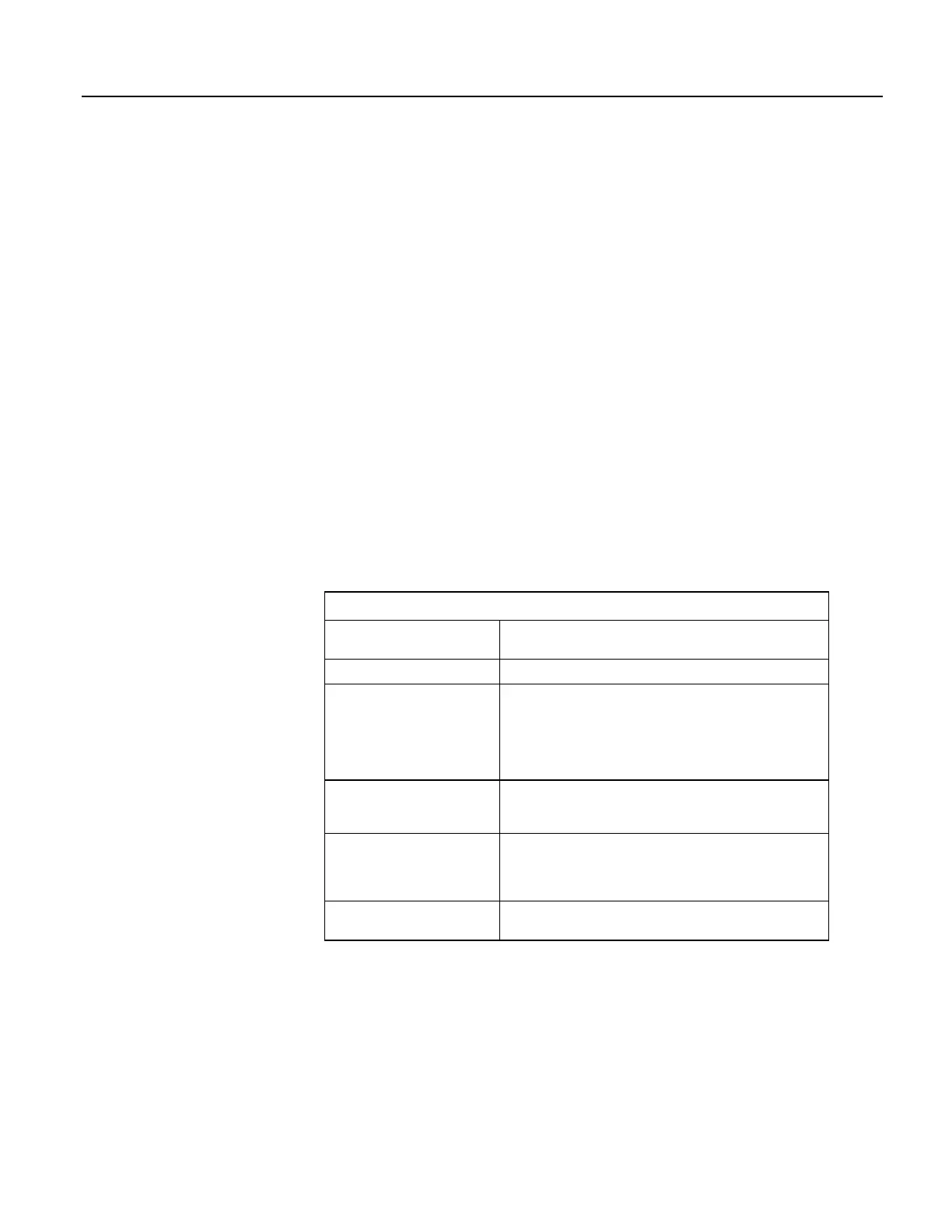Examples:
Command for a response wherein symbols for all tables are returned as
HTML
http://192.168.24.106/?command=BrowseSymbols&uri=dl:public&fo
rmat=html
Command for a response wherein symbols for all fields in a single table
(MainData) are returned as HTML
http://192.168.24.106/?command=BrowseSymbols&uri=dl:MainData&
format=html
Command for a response wherein symbols for a single field (Cond41) are
returned as HTML
http://192.168.24.106/?command=BrowseSymbols&uri=dl:MainData.
Cond41&format=html
BrowseSymbols Response
The BrowseSymbols format parameter determines the format of the response. If
a format is not specified, the format defaults to HTML. For more detail
concerning data response formats, see the Data File Formats
(p. 377) section.
The response consists of a set of child symbol descriptions. Each of these
descriptions include the following fields:
Table 111. BrowseSymbols API Command Response
name
Specifies the name of the symbol. This could be a data source
name, a station name, a table name, or a column name.
uri
Specifies the uri of the child symbol.
type
Specifies a code for the type of this symbol. The symbol types
include the following:
6 — Table
7 — Array
8 — Scalar
is_enabled
Boolean value that is set to true if the symbol is enabled for
scheduled collection. This applies mostly to LoggerNet data
sources.
is_read_only
Boolean value that is set to true if the symbol is considered to
be read-only. A value of false would indicate an expectation
that the symbol value can be changed using the SetValueEx
command.
can_expand
Boolean value that is set to true if the symbol has child values
that can be listed using the BrowseSymbols command.
If the client specifies the URI for a symbol that does not exist, the server will
respond with an empty symbols set.
HTML Response
When html is entered in the BrowseSymbols format parameter, the response will
be HTML. Following are example responses.
428

